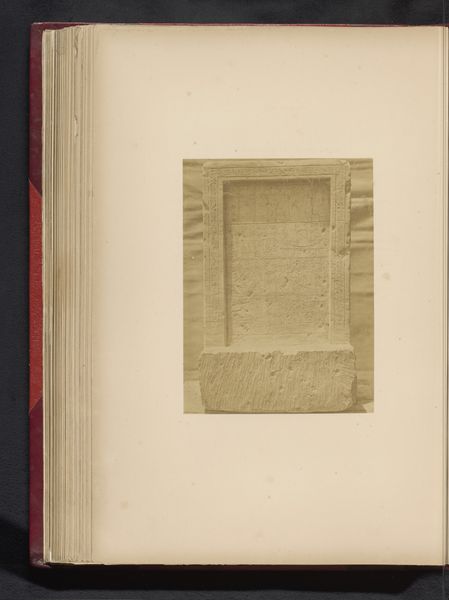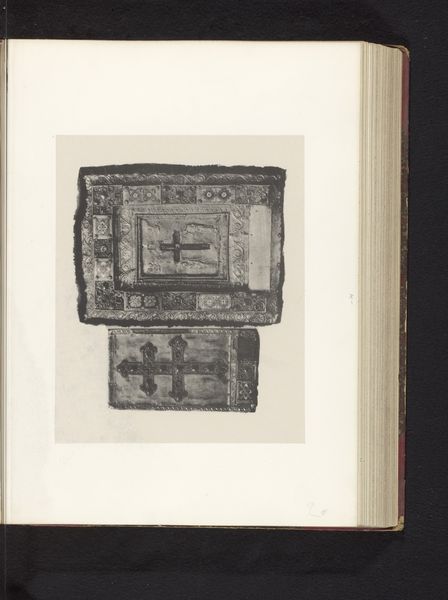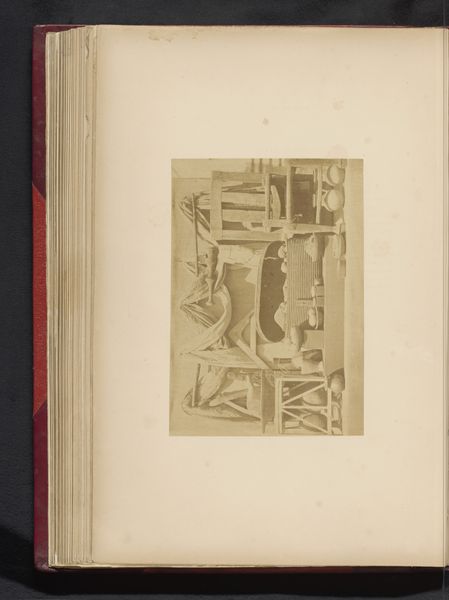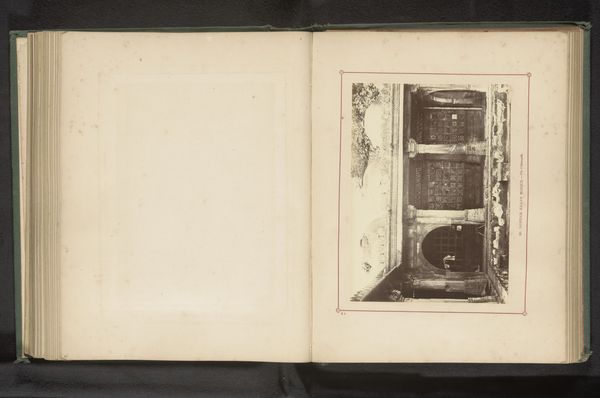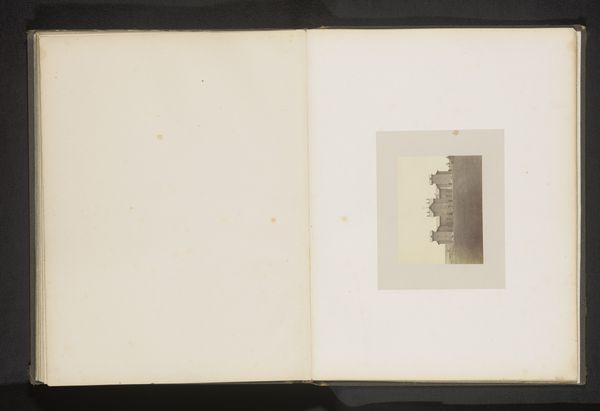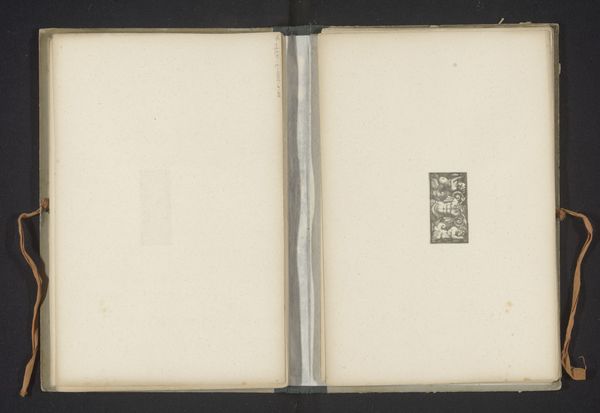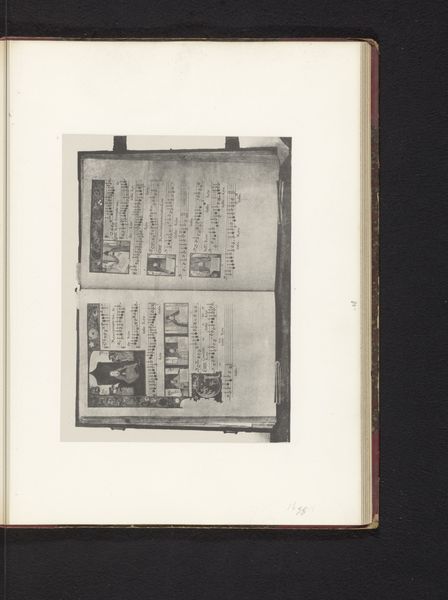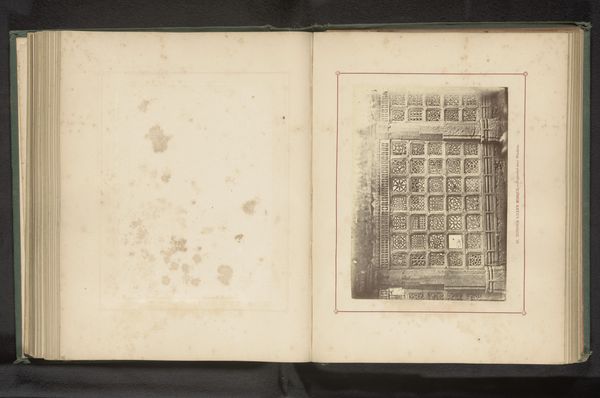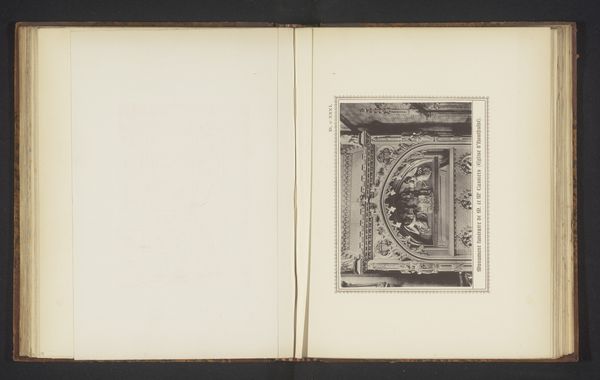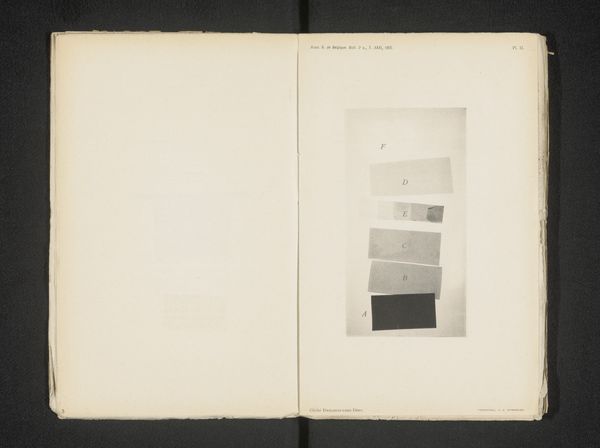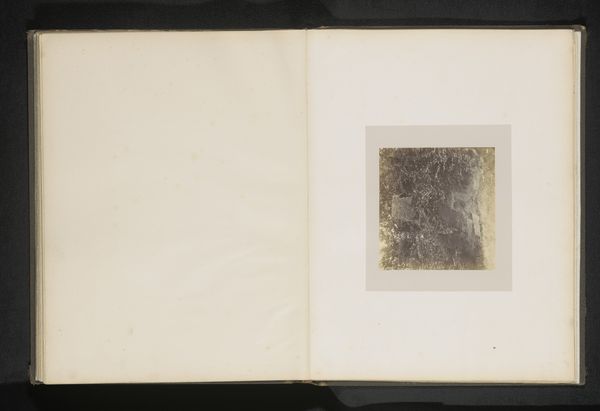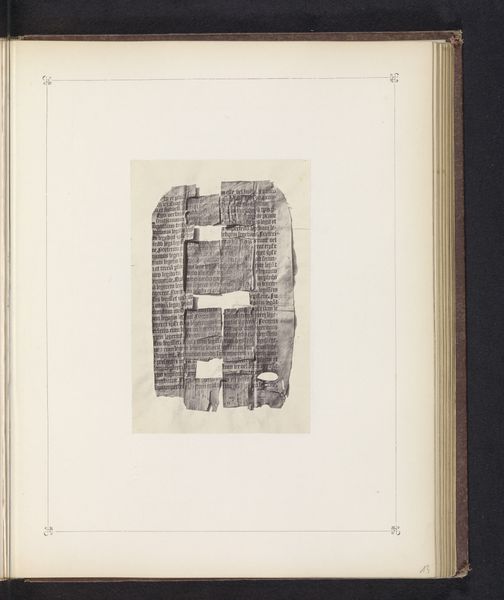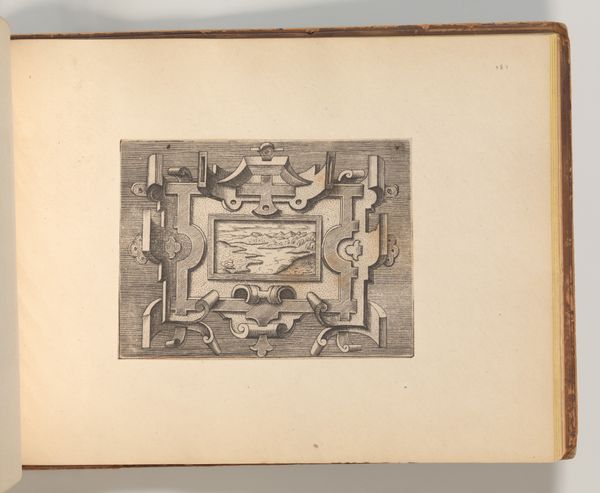
Zes reliëfs van leeuwen en runderen in het Boulaq Museum in Caïro, Egypte before 1871
0:00
0:00
relief, photography, gelatin-silver-print
#
aged paper
#
homemade paper
#
paper non-digital material
#
paperlike
#
relief
#
sketch book
#
ancient-egyptian-art
#
personal journal design
#
paper texture
#
photography
#
personal sketchbook
#
gelatin-silver-print
#
history-painting
#
paper medium
#
design on paper
Dimensions: height 174 mm, width 232 mm
Copyright: Rijks Museum: Open Domain
Editor: So, here we have "Zes reliëfs van leeuwen en runderen in het Boulaq Museum in Caïro, Egypte," photographed by Hippolyte Délié before 1871, presented as a gelatin-silver print within what looks like a sketchbook. I am immediately drawn to the texture of the paper, it really emphasizes the age and fragility of both the photograph and what it depicts. How do you read this work? Curator: As a materialist, I'm captivated by the layered production processes at play here. Délié’s photograph not only documents ancient Egyptian reliefs—themselves products of skilled labor and material extraction—but also exists as a commodity, circulated and consumed within a specific colonial context. Think about the resources required for photographic production in the 19th century: silver, glass plates, specialized chemicals, all elements tied to global trade networks and extraction. Editor: That's a great point. I hadn't really considered the layers of labor involved. Do you think the sketchbook format is significant? Curator: Absolutely! It democratizes the experience of engaging with Egyptian artifacts, moving them from the museum display to something more intimate and portable. Yet, consider how the 'sketchbook' and the gelatin-silver print transforms ancient reliefs into readily-available, exchangeable objects. It flattens labor into mere data; something available for immediate consumption. The craftwork becomes divorced from the skill that originally went into the design itself. Editor: That's fascinating. Seeing it as a product shaped by its historical context makes me think differently about photography. I initially just saw some documentation of another artwork but I appreciate all that labour and materials and process that actually goes into creating the photograph too. Curator: Precisely. By recognizing the material conditions of production, we unpack the complex web of social and economic relationships that mediate our encounter with art, across vastly different periods and cultures.
Comments
No comments
Be the first to comment and join the conversation on the ultimate creative platform.
